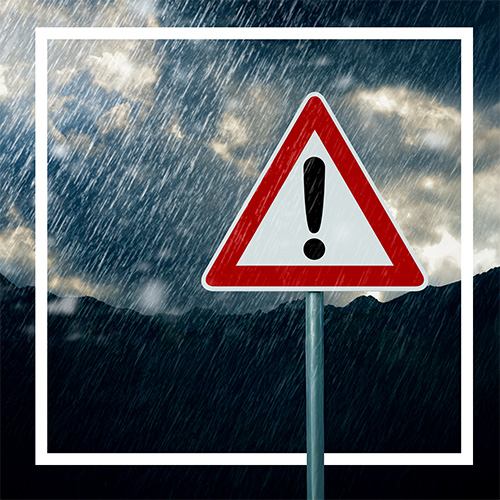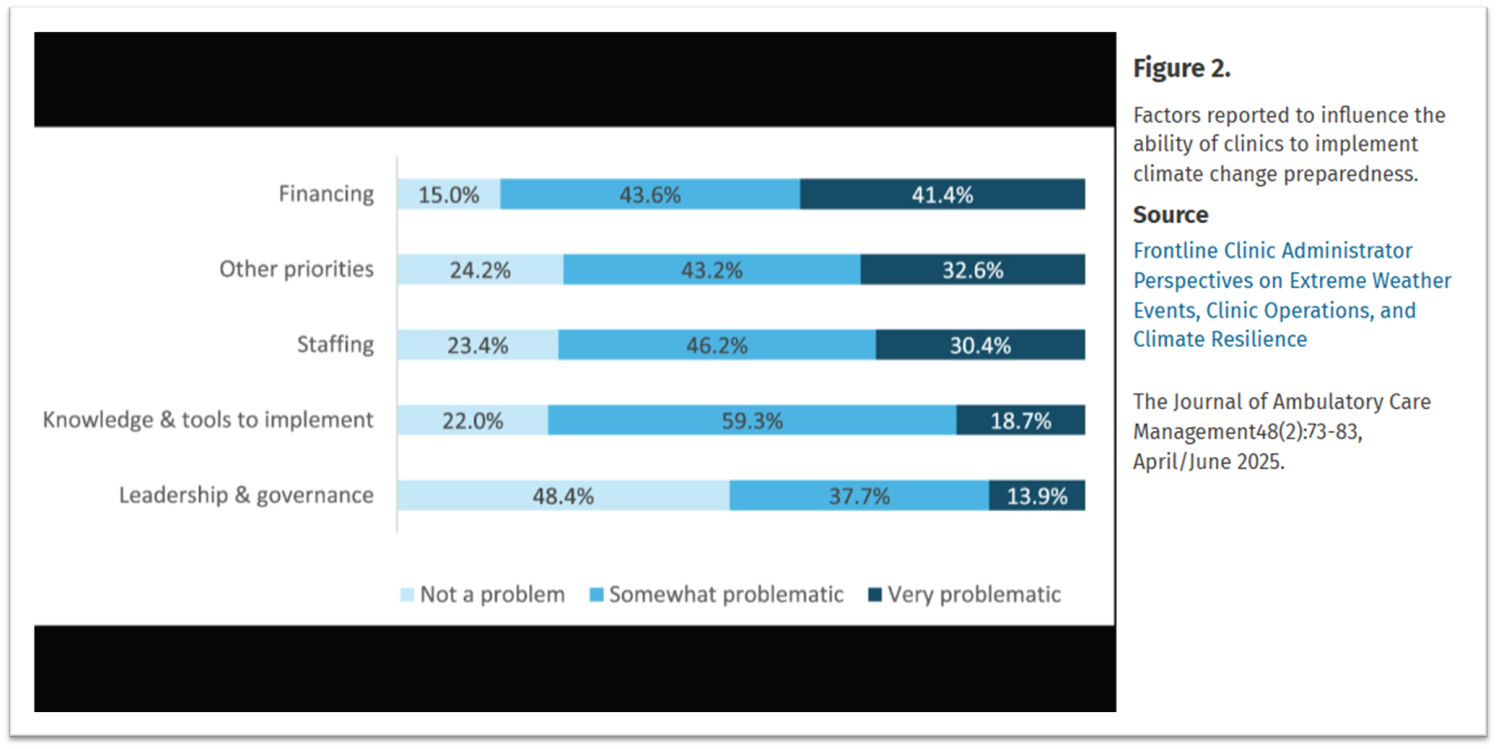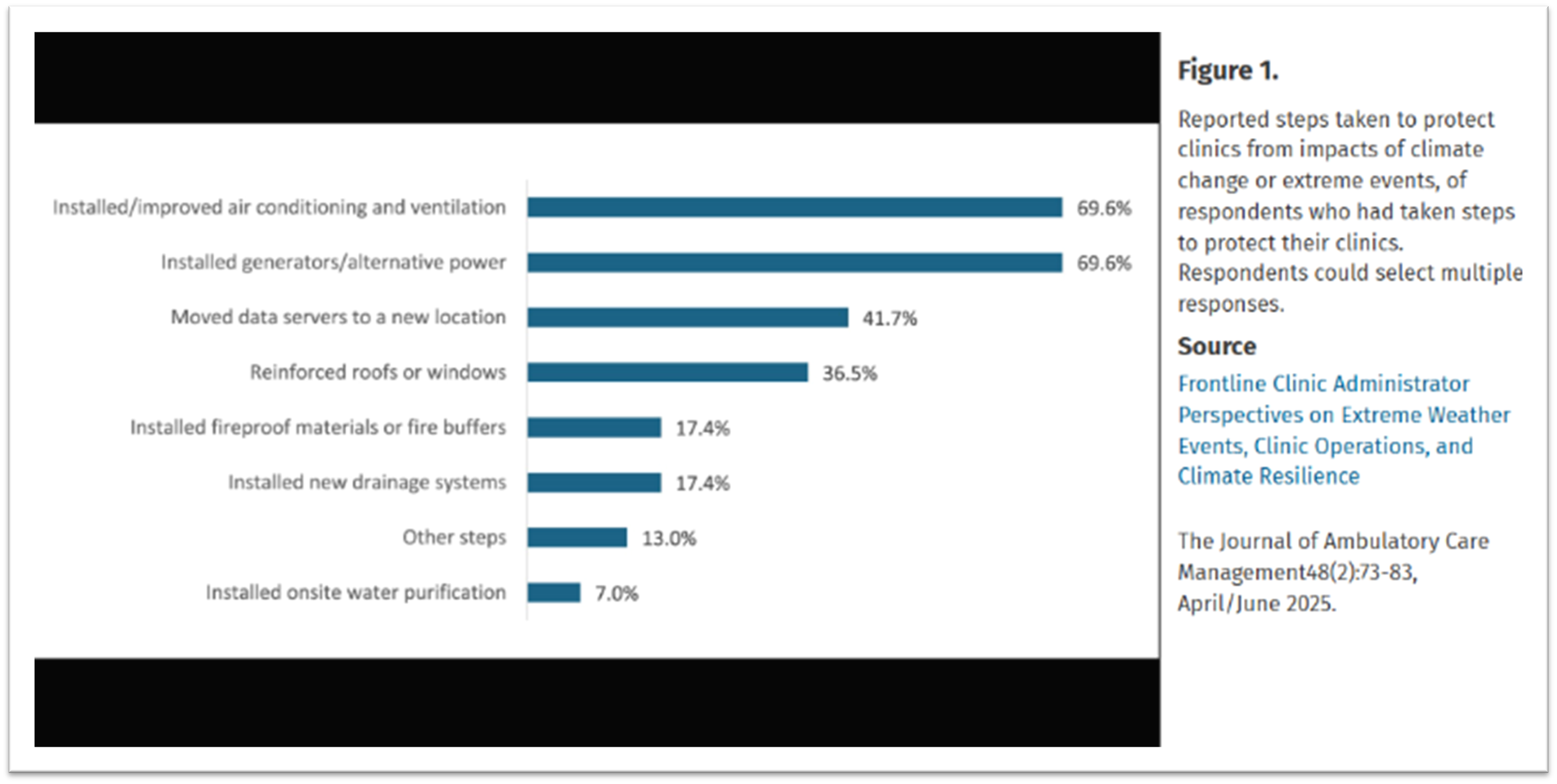
By Connie Christian, MBA, CPHRM
Extreme weather is no longer a distant concern—it’s a growing challenge for healthcare facilities nationwide. A recent national survey published in the Journal of Ambulatory Care Management (April/June 2025) sheds light on how climate-sensitive weather events are affecting frontline clinic operations—and how clinics are responding.
Key Findings from Survey
The survey included 284 self-identified administrators and other staff at frontline clinics. The goal was to determine their attitudes toward climate change and the impacts, resilience, and preparedness of clinics for extreme weather events.
- Resilience Perception: 50.9% of respondents reported that they believe their clinic is at least fairly resilient to extreme weather events, while another 17.1% reported that they believe their clinic is only a little or not at all resilient.
- Concern and Preparedness: 45.9% of participants reported concerns about extreme weather impacting their job, with barriers to preparedness including financing, knowledge, and resources.”[1]
- Protective Measures: Approximately 41.8% of participants said their clinic had taken steps to protect their clinic buildings, most commonly by installing backup generators and upgrading air conditioning. However, 33.8% reported they did not know if steps had been taken.
What’s Holding Back Preparedness?
The survey revealed these top obstacles to preparedness:
- Financing was the most cited barrier—85.0% said it was at least somewhat problematic.
- Access to knowledge and tools followed, with 78.0% marking it a challenge.
- Leadership governance was the least problematic factor, with 48.4% of participants stating this is not a problem.

Why This Matters for KAMMCO-Insured Clinics
Extreme weather events like extreme heat/cold, tornadoes, floods, and wildfires can:
- Disrupt care delivery and patient access
- Damage to systems and critical infrastructure
- Increase operational costs
- Directly results in patient harm
The potential risk or actual impact of extreme weather events was stated to have increased clinic operational expenses for nearly half (46.7%) of participants. For participants with additional costs due to extreme weather, over half reported costs for electrical system upgrades, building repairs, and staffing.[2]
What Can You Do?
Preparedness starts with awareness and planning. Nearly half of the participants (46.6%) stated they conduct annual or biennial hazard and vulnerability assessments.[3]
Want to Assess Your Clinic's Risk?
Visit KAMMCO’s Risk Management page to access the Ambulatory Risk Assessment Tool.
Or download the tool directly here: https://www.kammco.com/wp-content/uploads/2023/05/Final_RM-Assessment-Ambulatory-Medical_20221026.pdf.
References
[1] 2,3Wiskel, Tess MD, MPH; Matthews-Trigg, Nathaniel MPH; Stevens, Kristin MS; Miles, Thomas T. PhD; Dresser, Caleb MD, MPH; Bernstein, Aaron MD, MPH. Frontline Clinic Administrator Perspectives on Extreme Weather Events, Clinic Operations, and Climate Resilience. Journal of Ambulatory Care Management 48(2):p 73-83, April/June 2025. | DOI: 10.1097/JAC.0000000000000519 https://journals.lww.com/ambulatorycaremanagement/fulltext/2025/04000/frontline_clinic_administrator_perspectives_on.3.aspx

